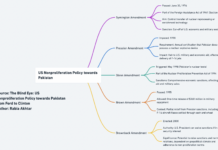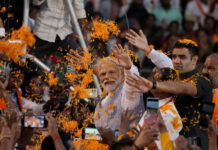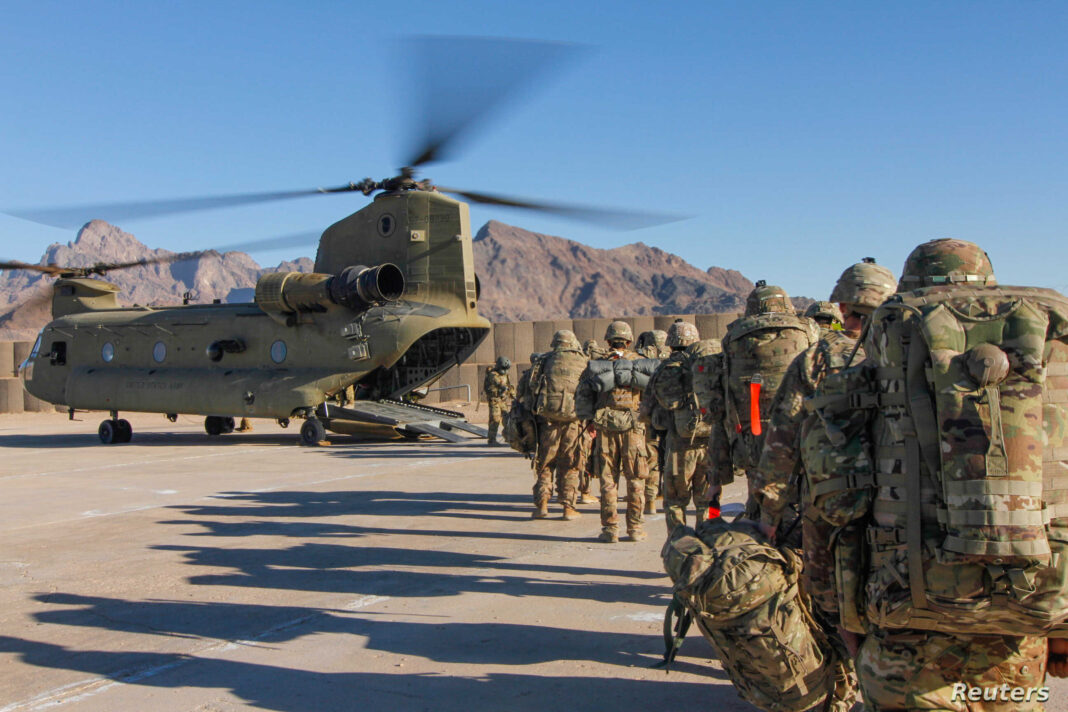Muhammad Sharreh Qazi
“In conclusion, the arms of others either fall from your back, or they weigh you down, or they bind you fast.”
― Niccolò Machiavelli, The Prince
Antony Blinken reminds us of the times when ‘do more’ resonated fiercely in every corner of Pakistan. From foreign policy decision making to national security, from economic decisions to military strategy, every aspect of Pakistan’s government was shadowed by how we were evaluated by America as per its ‘do more’ standard. As the war on terror progressed and Pakistan felt it had done more than it had bargained for with then President George W. Bush, things changed when Barack Obama supercharged America’s use of UAVs in the region. Controversies and collateral damage aside, America’s dependence on unmanned aerial precision kinetic operations proved more than successful for its commitment to maintain a low casualty rate of its soldiers in foreign hostile territory. Learning from Operation Desert Storm, American dependence on its air assets remains the favorite strategy of decision makers in Washington DC whenever it chooses to venture far from home. The convenience of airbases, friendly coalition partners going out of their way to facilitate American aerial operations and a general necessity to evade high troop casualties is what drives its UAV strategy. Recently, however, the convenience of close proximity airbases is something hard to come by as Pakistan continues to evade such possibilities. So how does America plan to keep sustaining Afghanistan’s security infrastructure by providing an aerial advantage through a strong UAV presence? Would it move its base of operations in the Middle East and hope that Iran or other vulnerable regions do not notice? Or would it plan for something that not only allows it to maintain its UAVs close by but also deter other competitors from taking advantage of America’s Sede Vacante in Afghanistan?
As the Reagan Carrier Strike Group (Carrier Strike Group 5- CSG 5) travels all the way from Japan to assist in withdrawal currently being facilitated by the American Navy’s 5th Fleet stationed at the Gulf, having two large aircraft carriers in close proximity does generate the need to test their UAV flight operations capabilities. UAV losses are not as significant in combat as they are in landing and takeoff but with a moving flight deck, that risk only stands to magnify. Currently, not only is America working to improve its capability to land UAVs on aircraft carriers but it also is working to improve on automatic landing and takeoff technology for attack drones. So if America is unsuccessful in securing any close proximity air base around Afghanistan, it might just consider using its aircraft carriers for a similar purpose. Having CSG-5 travel such a long way to make its maiden voyage to the Gulf may not only be to increase naval presence against China’s maritime ambitions or even Iran’s growing naval footprint. They might stand to serve as a forward base of operations for American air force and UAVs to not only surveil but strike if required. This means no strings attached or commitments and bargains to seek airbases and landing strips from neighboring states. America’s current focus is two-pronged: firstly, it aims to upgrade its high-altitude long endurance capabilities for consistent surveillance and; secondly, it aims to allow its UCAVs to use such surveillance to its full potential and keep American dominance in any region it chooses to operate in. The important question is this: will Afghanistan post-withdrawal serve as a test subject for America to perfect this desired maneuver? The jury is still out on America’s unmanned presence in Afghanistan but it continues to serve the purpose though.
For America, another concern is to secure ‘friends’ in proximity of its interests and as Jake Sullivan and Dr. Moeed Yusuf, NSAs of American and Pakistan respectively, talk it out, America expects to hear more from Islamabad. With Pakistan not willing to facilitate American presence on its soil to be extended towards Afghanistan, it does need assurances and support in containing a spillover from the Durand Line, Pakistan and Afghanistan’s international border. This means that there will be some concessions made but to what end? Pakistan cannot afford to receive American presence without it infringing on its strategic layout with China but it certainly cannot afford to let America prefer any other regional stakeholder to replace it. Even when Chinese administration talks it out with the Taliban and further complicates issues of legitimacy for who to talk to in and around Kabul, America and Pakistan find themselves in almost similar waters. America cannot risk withdrawing without keeping oversight and does not want to leave a full-blown civil war in Afghanistan and Pakistan, interestingly, cannot afford the same either. China does hope to play a constructive role in rehabilitating Afghanistan but that means America would have to cave in and give way. So would America be offering concessions and rewards like it did before or will it be playing the ‘with us or against us’ yet again? A lot has changed since 2001 and a major part of that change has to do with how American partners in South Asia have been frustrated with impasses in a prolonged war fought by Washington DC.
America’s role post-withdrawal is structured around compromises, concessions, and expecting dividends, if not shopping lists, from states it expects to woo in receiving much needed assistance. This would also mean dialing down on the China-America rivalry for a moment and to consider tolerance in investments in conflict regions; much like the tolerance they share in Africa. Having two aircraft carriers in close proximity would then serve as insurance in case the plan does not work, for which upgrades to its UAV-UCAV program is imminent. Choosing to retire from Afghanistan and still opting to increase maritime presence in the Gulf is how America plans to deal with the post-withdrawal scenario. If it can use its maritime influence in the Indo-Pacific to deter competitors from seizing the moment and invest in close proximity states to curry favor, it just might be able to save face and keep its head in the game. If America is able to convince Pakistan that a meltdown in Afghanistan can be prevented through joint collaboration, it can play on Pakistan’s fragilities, eventually securing some gains of sharing its post-withdrawal burden. America expects regional players to jump in for Afghanistan and surely India, China and Pakistan are playing that ruse but without a clear head to legitimacy at Kabul, America’s post-withdrawal position might prove to be more cumbersome than considering a limited presence in the region.
Dr. Muhammad Sharreh Qazi is a Lecturer at Department of Political Science, University of the Punjab and a PhD in International Relations.

















